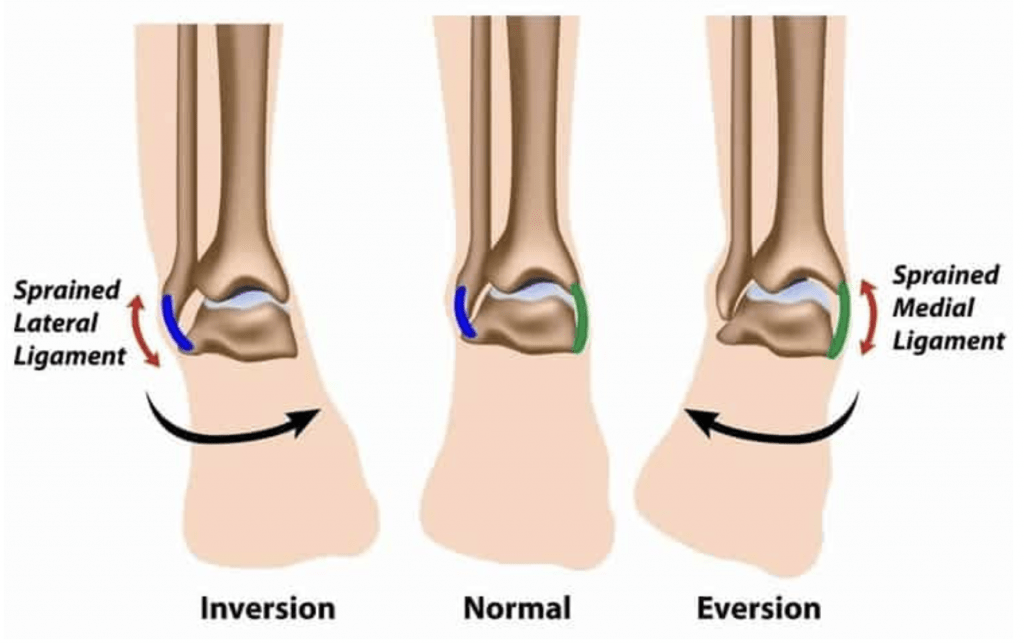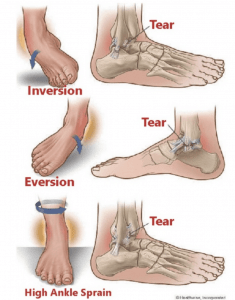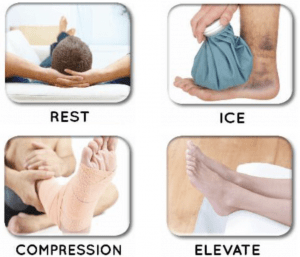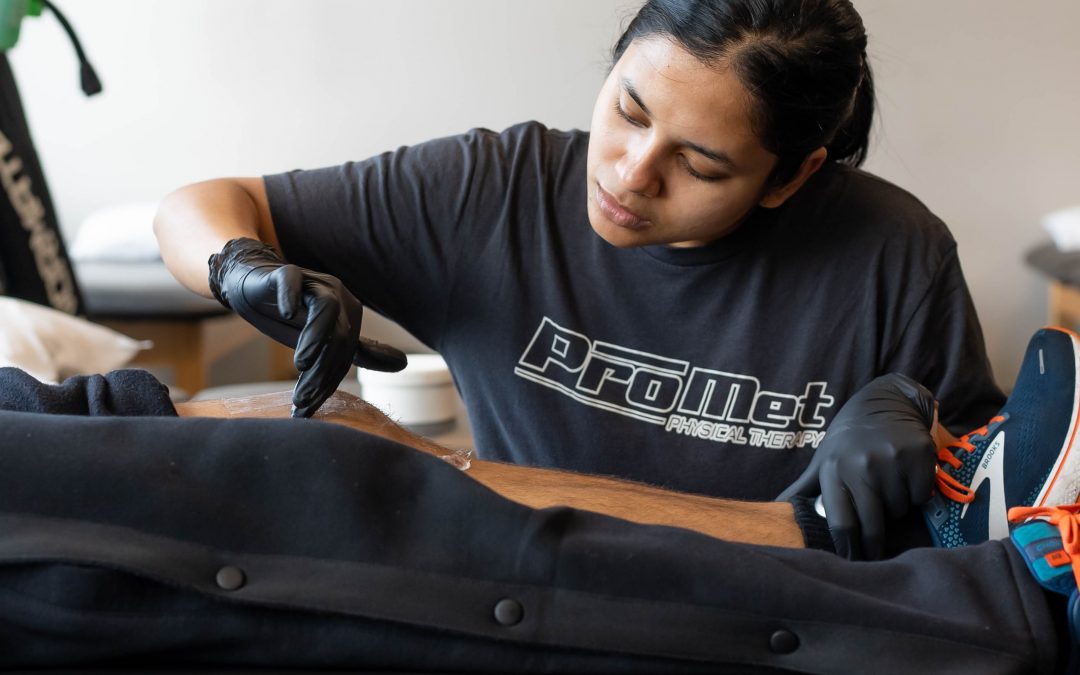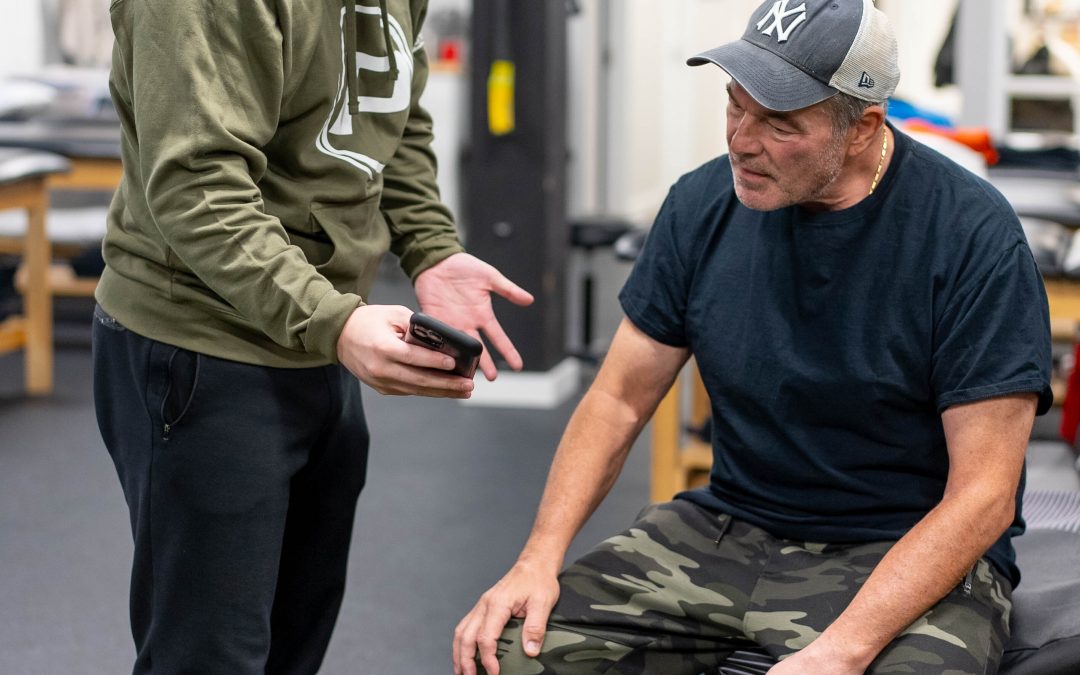It’s that time of year again, after months of shooting around at the park and in your backyard… basketball team tryouts are finally here. Whether you’re trying out for freshman, JV, or varsity, you’ll have to prove to your coaches and teammates that you have what it takes to make the team. During the last day of tryouts, you come down from a lay-up and roll your right ankle – OUCH! Sitting on the sideline you notice that your ankle is swollen, painful, and you can’t put any weight on your foot. You just sprained your ankle and have a million questions running through your mind, so what now? Let’s talk about ankle sprains so you can prepare yourself for potential injuries or to help a teammate!
The ankle is a crucial joint in the body, mainly due to its function and responsibility. Since being the most distal primary joint, the ankle is required to make contact with the ground first. Despite being classified as a grossly mobile joint, stability plays a subtle yet major role when it comes to movement. However, sometimes movement extends beyond the point of restriction when body weight “pushes” the joint past its limit, causing the ligaments become sprained.
There are three main types of sprains: inversion, eversion, and syndesmotic. Inversion is by far the most common type of sprain, as well as one of the most common orthopedic injuries. It occurs when your foot rolls inward and stress is applied on the lateral or outside ankle, whereas an eversion sprain occurs when the foot rolls outward and stress is applied on the medial or inside ankle. The syndesmotic ankle sprain, also known as a “high ankle sprain” occurs when the ankle is forced up into dorsiflexion and outward into external rotation.
The acute phase of an ankle sprain is the most critical aspect of recovery. The “Big 3” should be used and prioritized as a benchmark to continuously progress to the next stage of recovery: Swelling, Range of motion, and gait mechanics. Pain is considered a possible fourth indicator, but keep in mind that pain is a subjective measure but should be monitored on a constant basis. The R.I.C.E. method (which stands for Rest, Ice, Compression, and Elevation) has been a valuable tool used by players and coaches around the world for years. Typically speaking, 24-72 hours after the initial injury you should stay off bearing weight through the ankle, apply ice for 10-20 minutes every 1-2 hours or until the swelling/bruising subsides, use an elastic ACE wrap for support, and elevate the leg and ankle above the level of the heart about 2 hours per day.
Due to the fact that your ankle is the only body part that makes contact with the ground, your central nervous system gathers vital information within seconds and produces motor commands by determining body position. A main goal during recovery is to establish the specific demands from the sport of basketball itself. Generally speaking, offensive players require more of a “load and explode” formula, while defensive players require “reactive forces” to the opposition. Plyometrics plays a notable role no matter the position, as almost every sport requires maximal force during a short interval of time.
It is also worth noting that joint mobility and muscle strength is important along the proximal chain, but hip mobility and core strength is something that is constantly over-looked especially in younger athletes. These supporting structures play a vital role in the lower extremity performing safely, effectively, and efficiently. Every ankle sprain presents with different deficits and limitations but having a general set of guidelines to follow, combined with an individualized goal orientated treatment program ensures optimal success across all walks of life.


